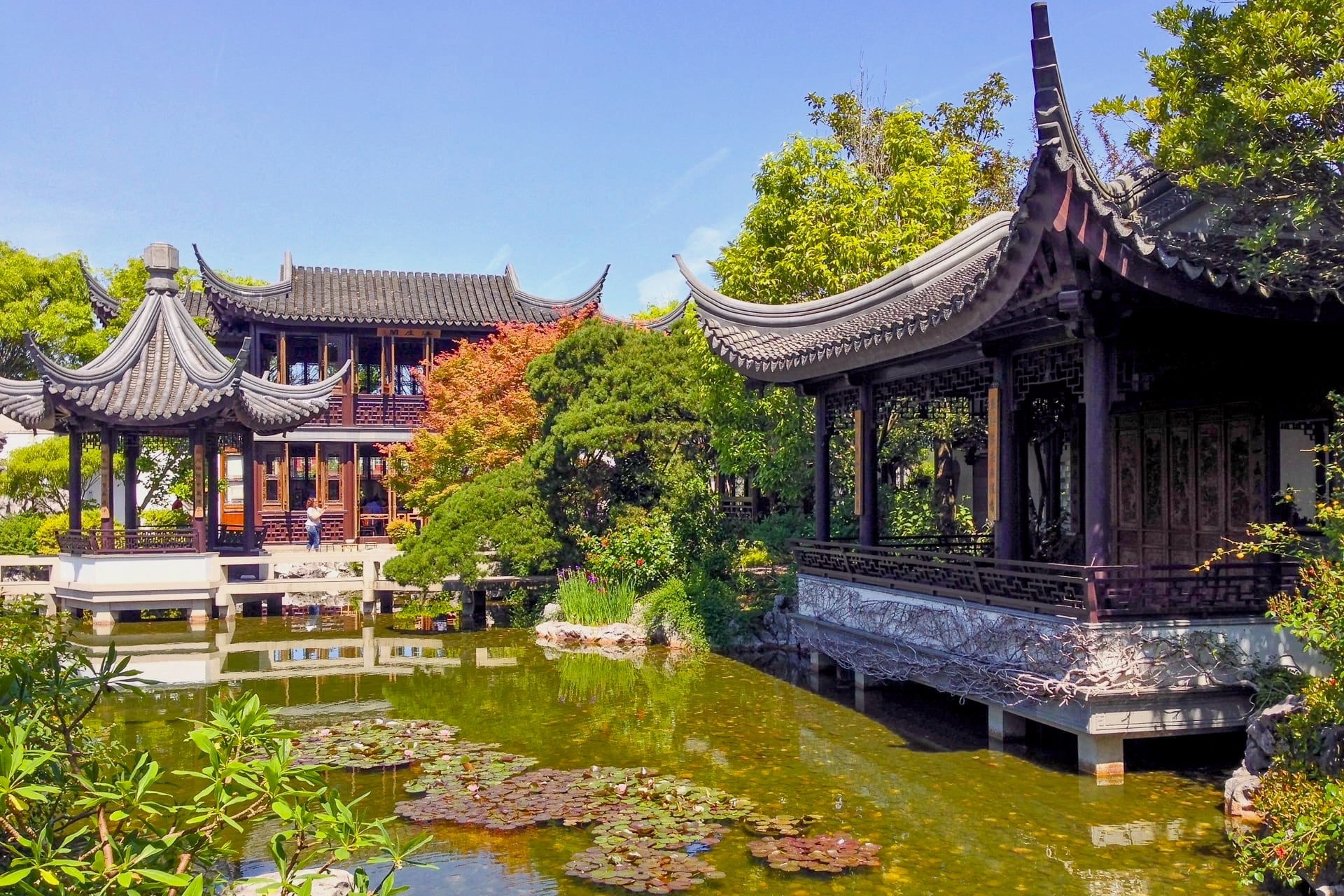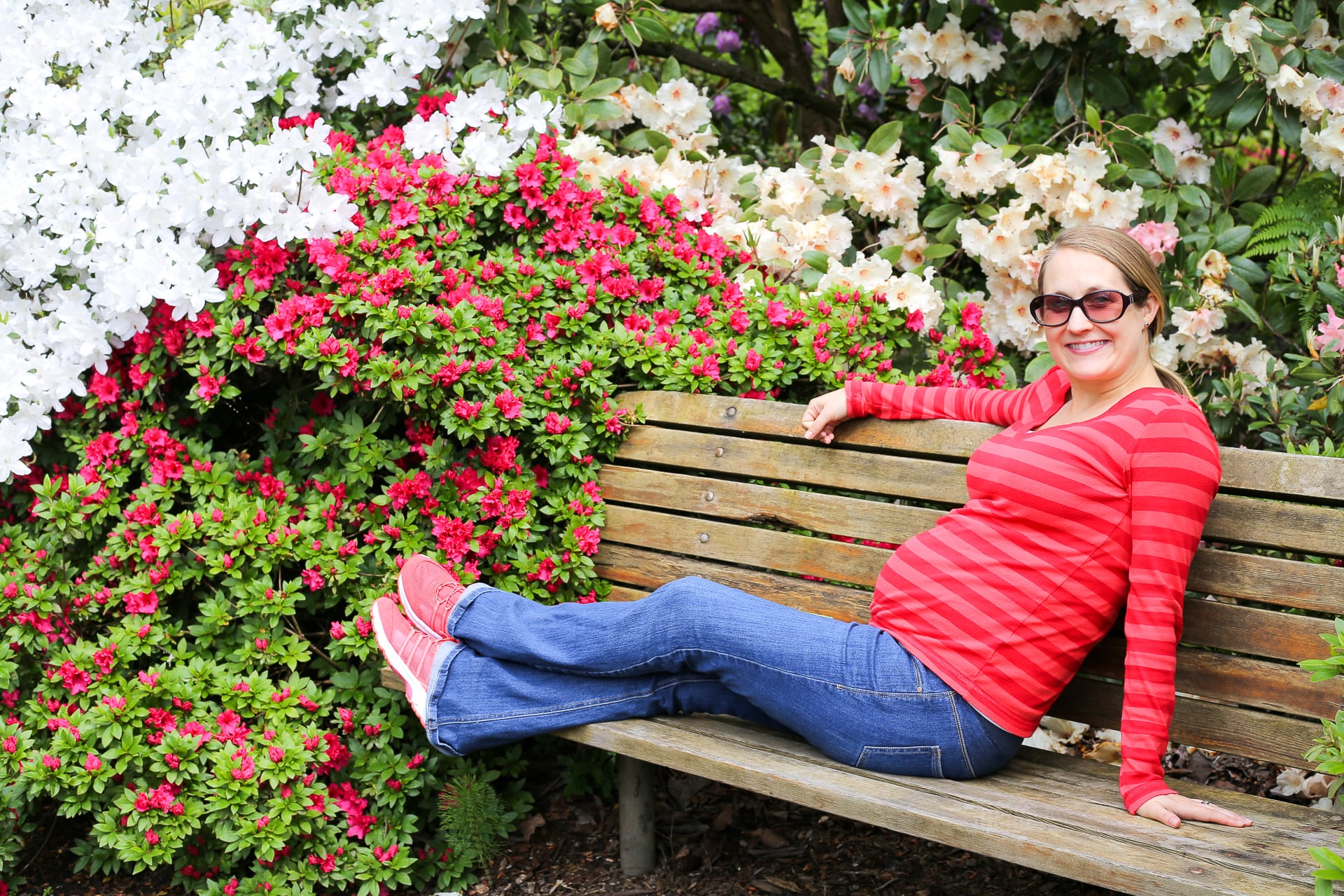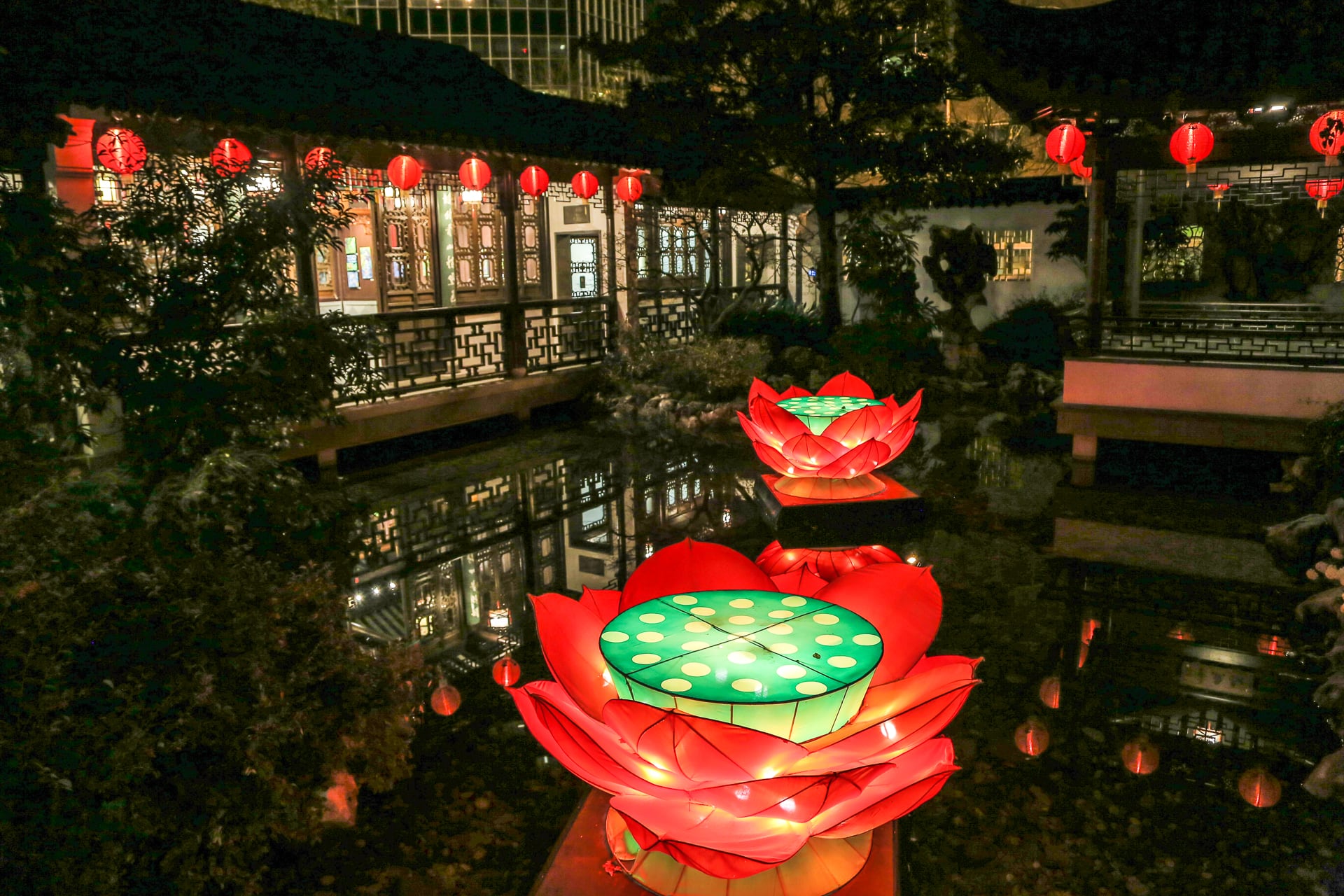Most visitors to Portland, Oregon have heard about the city’s famous Japanese Gardens on the edge of the city center. Yet, surprisingly few by comparison visit Lan Su Chinese Garden which occupies an entire city block in the heart of downtown.
Lan Su seamlessly blends building materials and 2000-year-old tradition from Suzhou, China with native Pacific Northwest plant species to create a peaceful and evocative oasis amidst one of Portland’s busiest neighborhoods.
Wandering around the Ming Dynasty gardens and handcrafted structures, one could easily forget they are in 21st-century North America.
There is also a traditional teahouse on site offering live music, tea ceremonies, and a curated collection of teas from various regions of China.
Here is our guide to visiting Lan Su Chinese Garden through the seasons, with helpful tips to ensure you get the most out of this very special place.
Visiting Lan Su Chinese Garden
Discovery
I am not sure exactly how I first learned of the Portland Classical Chinese Garden that is Lan Su. Neither family nor friends living in the Portland area knew of the place and Lori and I hadn’t ever heard of anyone talk about the garden prior to moving here in February of 2015.
Every Portlander (and Oregonian for that matter) seems to have heard of the Japanese Garden. Along with the International Rose Test Garden and Powell’s City of Books, it’s a top draw for tourists visiting the area.
But the Chinese Garden? Not so much.Hard for us to believe now, as Lan Su may just be our favorite space in all of Portland.
Lori and I have loved all-things-classical-Chinese-garden ever since visiting our first (and second, and third, and fourth) in Shanghai and Suzhou in 2012. Then, on a trip to Vancouver, BC in 2013, we made sure to visit that city’s Chinese Garden, which turned out to be one of the highlights of that trip as well.
Regardless of how we first learned of Portland’s Chinese garden, we were fortunate to discover this special place early on in our move to the area and wise enough to purchase an annual membership on our first visit (even before stepping foot in the garden) — easily one of the best investments we’ve ever made.

Since then, Lori and I have visited Lan Su a dozen times in the past year — I even made a point to visit on my birthday, which may give some small indication as to what we think of this place.
This post is dedicated to visiting this very special place over the course of one calendar.

February/March
Chinese (Lunar) New Year Festivities!
Our third visit to Lan Su was for the Chinese (Lunar) New Year Lantern Viewing and performances, quite possibly the garden’s biggest draw of the year.
It was cold, dark, and we weren’t sure what to expect, so I opted not to bring my camera.
Big mistake.
Fortunately my five-year-old camera phone was on hand to snap some pics…sort of.
Fortunately, I didn’t make the same mistake for the following year’s New Year festivities. Check out that the post in that link for all the details on attending this memorable event.


For our first Chinese New Year at the garden, we opted for general admission, which meant standing in the freezing cold between three very excited Chinese people and a very abusive bush.
Still, it was well worth the visit.
The Garden is rarely open past dark and never decorated as much as during Lunar New Year celebrations.
And the dancing and dragon and drumming performances were quite entertaining, particularly when they let the dragon loose to circle the garden and entertain (terrorize) the small children in the crowd. Warmed my heart!
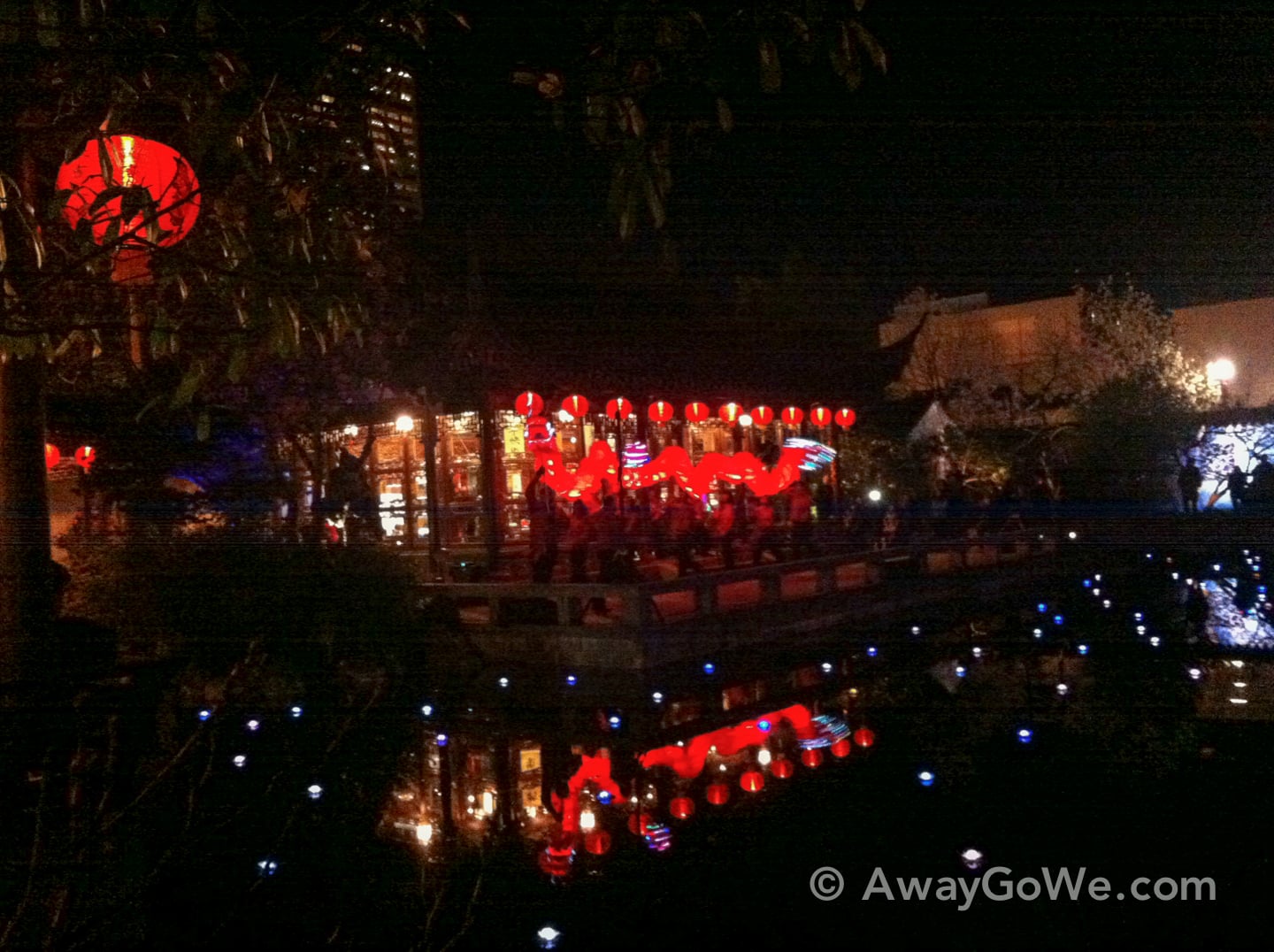


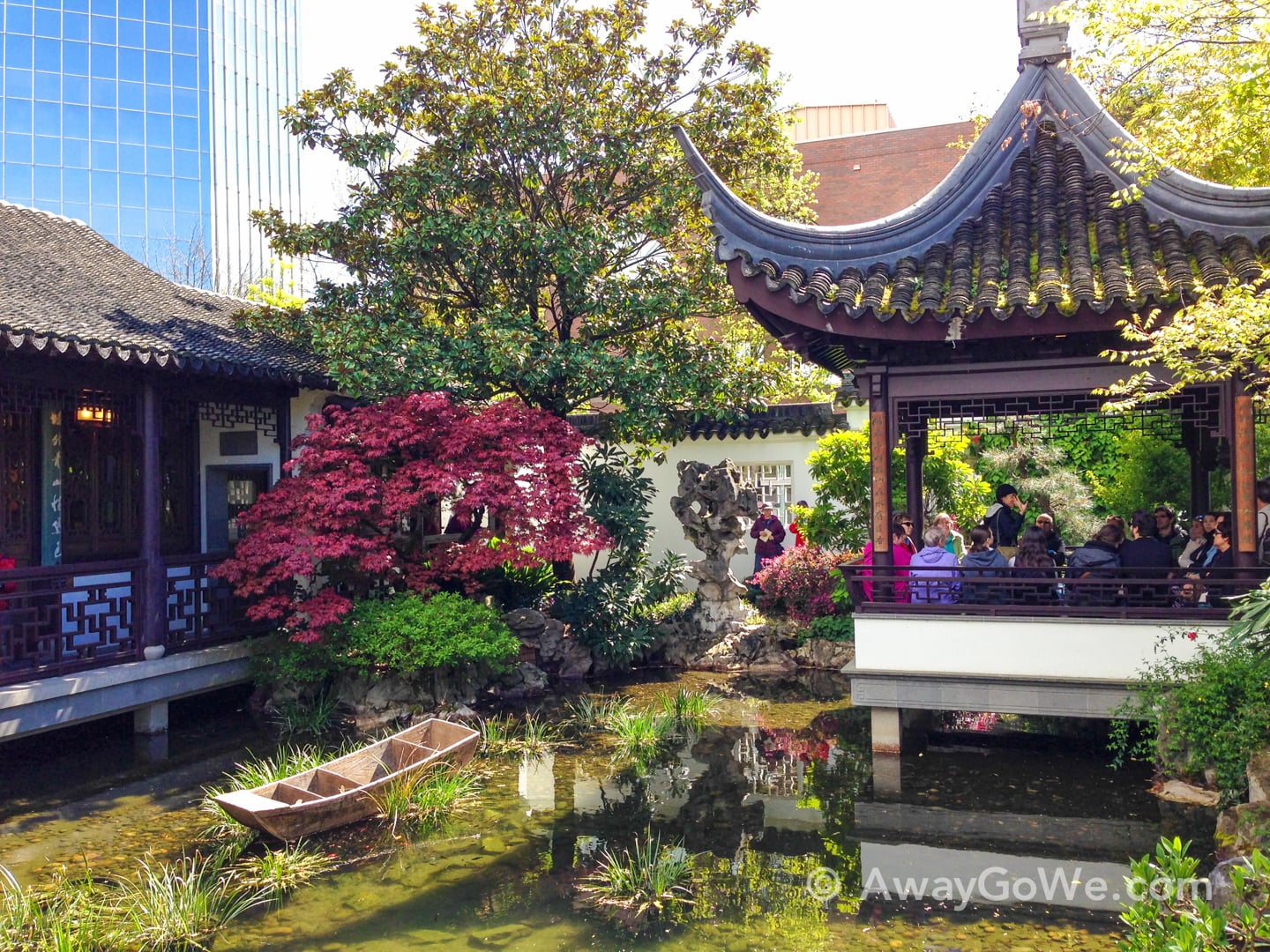
April
So what exactly is Lan Su?
Well, it’s a Chinese garden in Portland’s Chinatown district built in the Classical style.
Historically, classical gardens in China were commissioned by emperors and/or members of the imperial family (scholars, poets, government officials, soldiers, merchants, etc.) for pleasure, but also to impress visitors to their already opulent residences.
A typical classical garden is enclosed by walls and includes a variety of structures in addition to trees, flowers, ponds, and rocks carefully placed throughout the property.
The garden is meant to convey an idealized miniature landscape embodying balance and encouraging reflection.
In classical times, the deeper you were permitted into the garden was a reflection of the depth of your relationship with the owner of the residence.
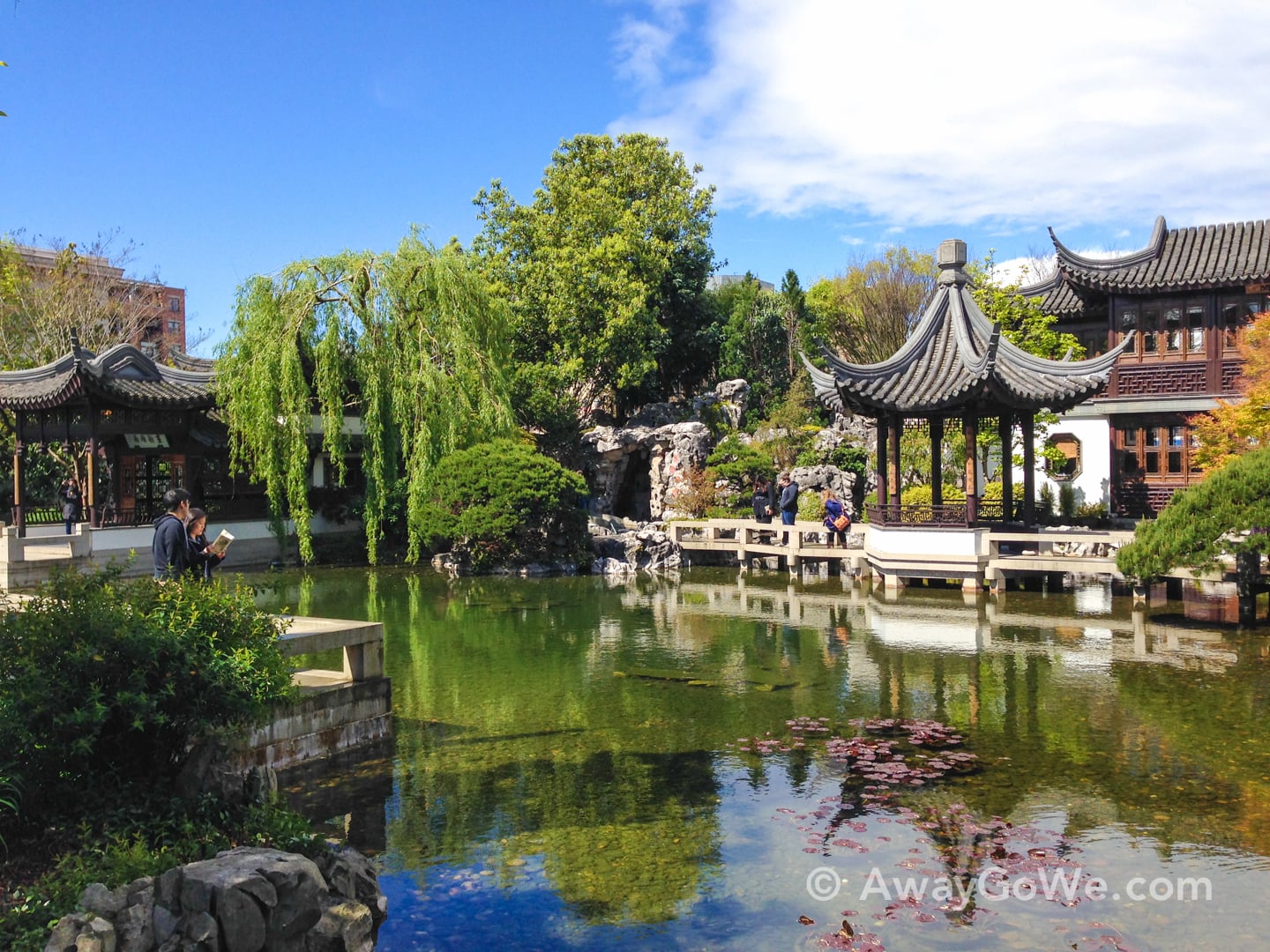
A Trans-Pacific Collaboration
Constructed well outside of the classical period in 2000, Lan Su Chinese Garden is neither a true Classical garden nor anybody’s residence.
Yet, it is a remarkably accurate and faithful representation of one.
What immediately struck us on our first visit to Lan Su was just how closely the various aspects of the garden reminded us of the classical gardens scattered across Suzhou, a UNESCO designated city in China known for its collection of Classical Gardens and one of our favorite stops during our time in China.
We quickly learned in one of the pavilions at Lan Su that the striking resemblance was not a mere coincidence, but a result of a trans-Pacific partnership and careful planning.
Suzhou just so happens to be Portland’s Chinese Sister City, and nearly all of the stones, rocks and woodwork for the pavilions and teahouse were shipped to Portland from Suzhou!
Even the artisans were shipped from Suzhou!
The name — Lan Su — is a reflection of the close relationship between the two cities — it’s a portmanteau combing Port[Lan]d and [Su]zhou. “Lan Su” (蘭蘇) also means arising or awakening orchid in Chinese, so the garden is sometimes called the Garden of Awakening Orchids.
Suzhou and Portland became Sister Cities in 1988, and ground was broken on the garden 11 years later.
It took 65 artisans from Suzhou 14 months to construct the garden, utilizing 500 tons of rock, including Scholar’s rock from Lake Tai in China.
The garden was officially named Lan Su on its 10th anniversary in 2010.

Lan Su is a favorite place to bring family and friends visiting from out of town.
Given that there are currently only six Classical Chinese Gardens in the U.S., Lan Su is fairly unique, in addition to being a great place to spend an afternoon in downtown Portland.
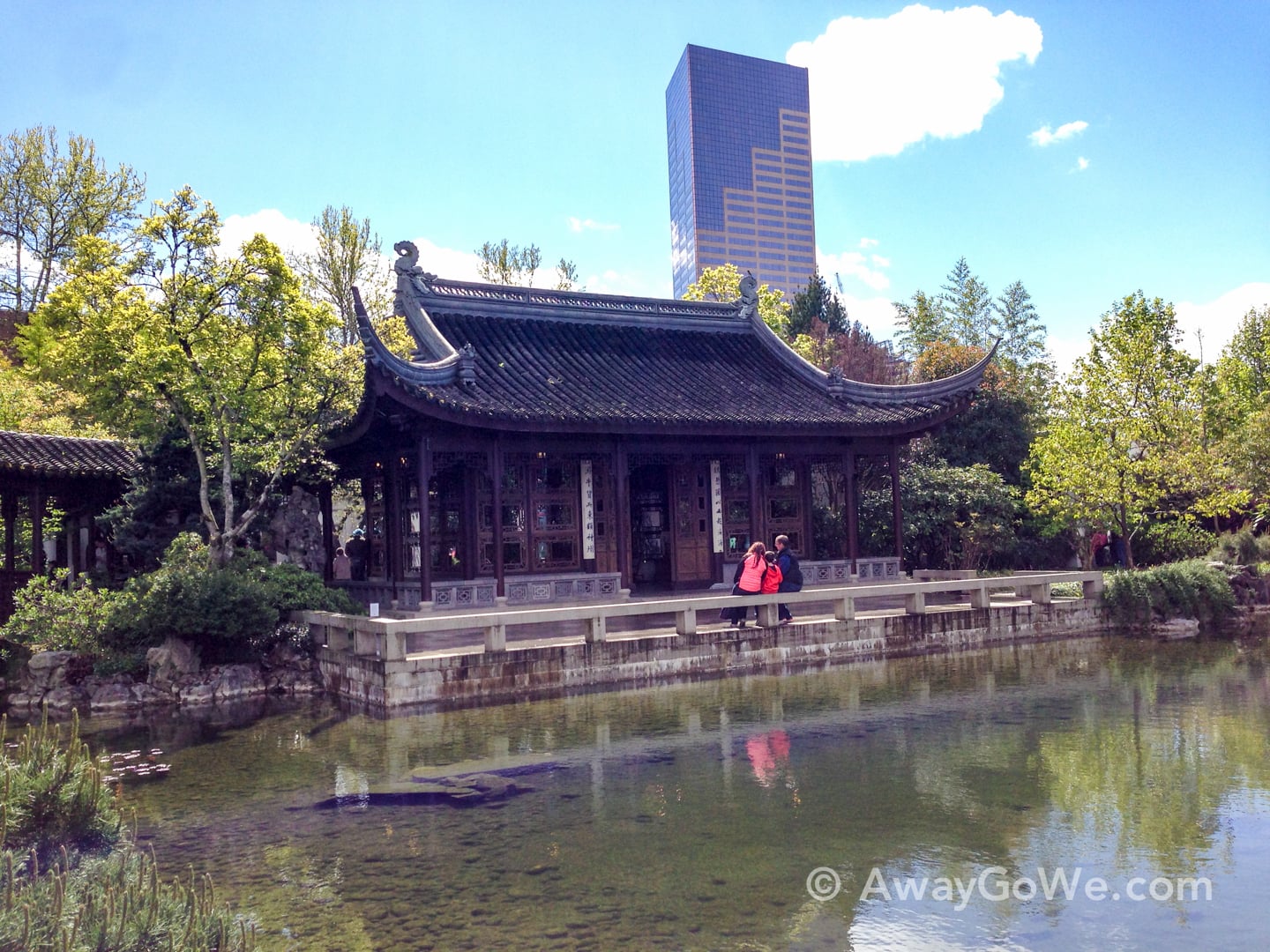


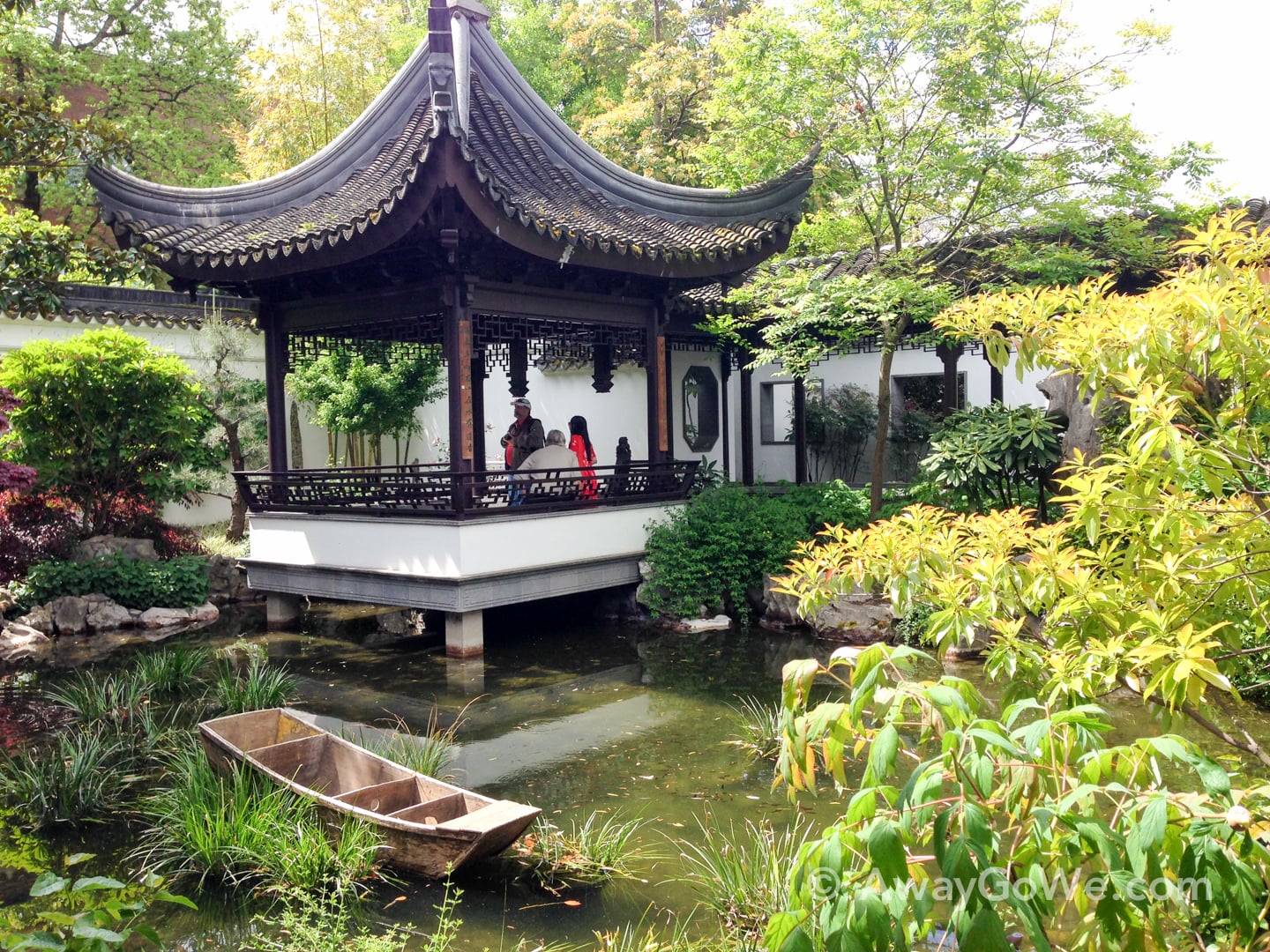
Garden Layout
Lan Su completely envelops one entire city block in Portland, encompassing some 40,000 square feet.
Small in comparison to Portland’s Japanese Garden, Lan Su packs a punch, as every square inch of space has been carefully designed and cultivated, and includes more structures on one city block than several sprawling Japanese gardens combined.
Below is a map of the garden which gives you some sense of the lay of the land.
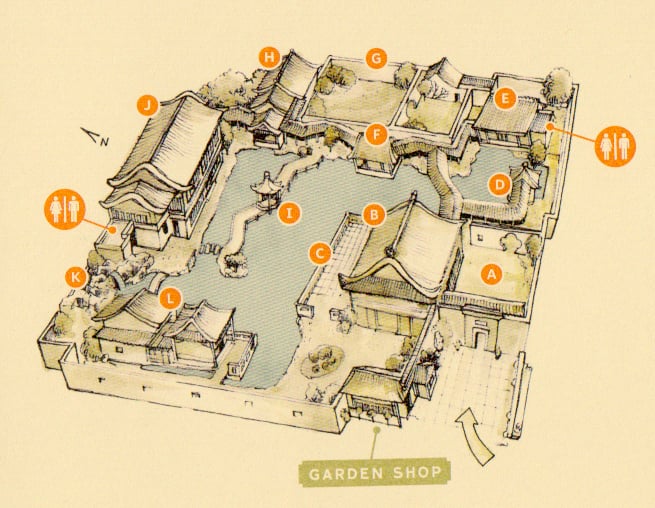
While the majority of materials and skilled artisans who built the garden came from China, the lion share of plants and trees did not.
Most of the vegetation was procured in the U.S. but carefully selected for the garden and the climate (and most are actually indigenous to China as well).
About the only plants that aren’t native in the garden are the banana trees, which always seem a bit forlorn in the Pacific Northwest climate.

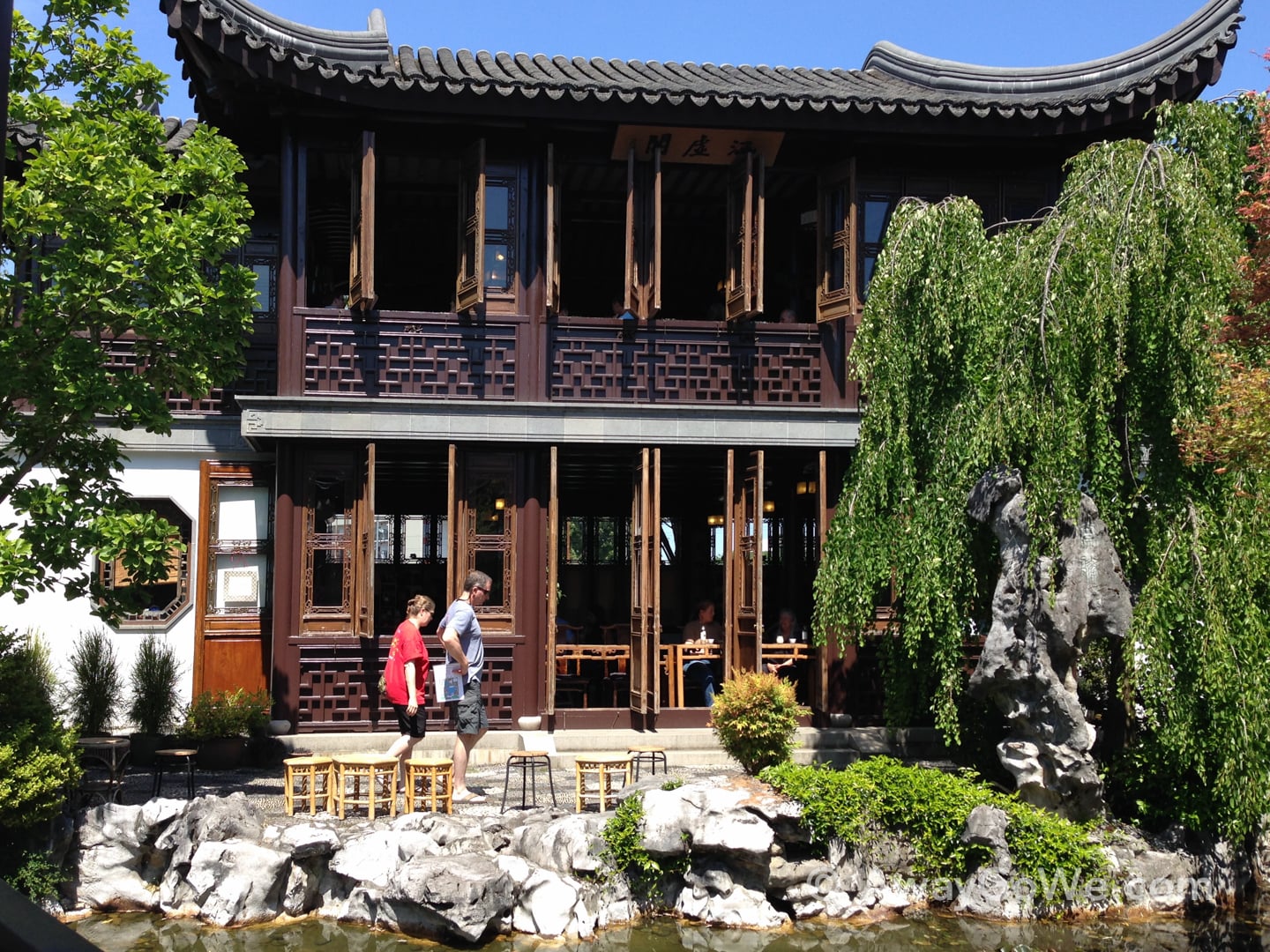
Lan Su Teahouse
One of the centerpieces in the garden is the Tower of Cosmic Reflections — Lan Su’s commanding two-story tea house.
Operated by Portland’s own Tao of Tea, it is an awesome place to rest and reflect, try a variety of loose leaf Chinese teas in the traditional method, and listen to live traditional Chinese music during much of the year.
Ironically, after six weeks spent in China, it wasn’t until we had tea at Portland’s Lan Su that we were finally learned the proper way to use a gaiwan (traditional clay teacup with lid).

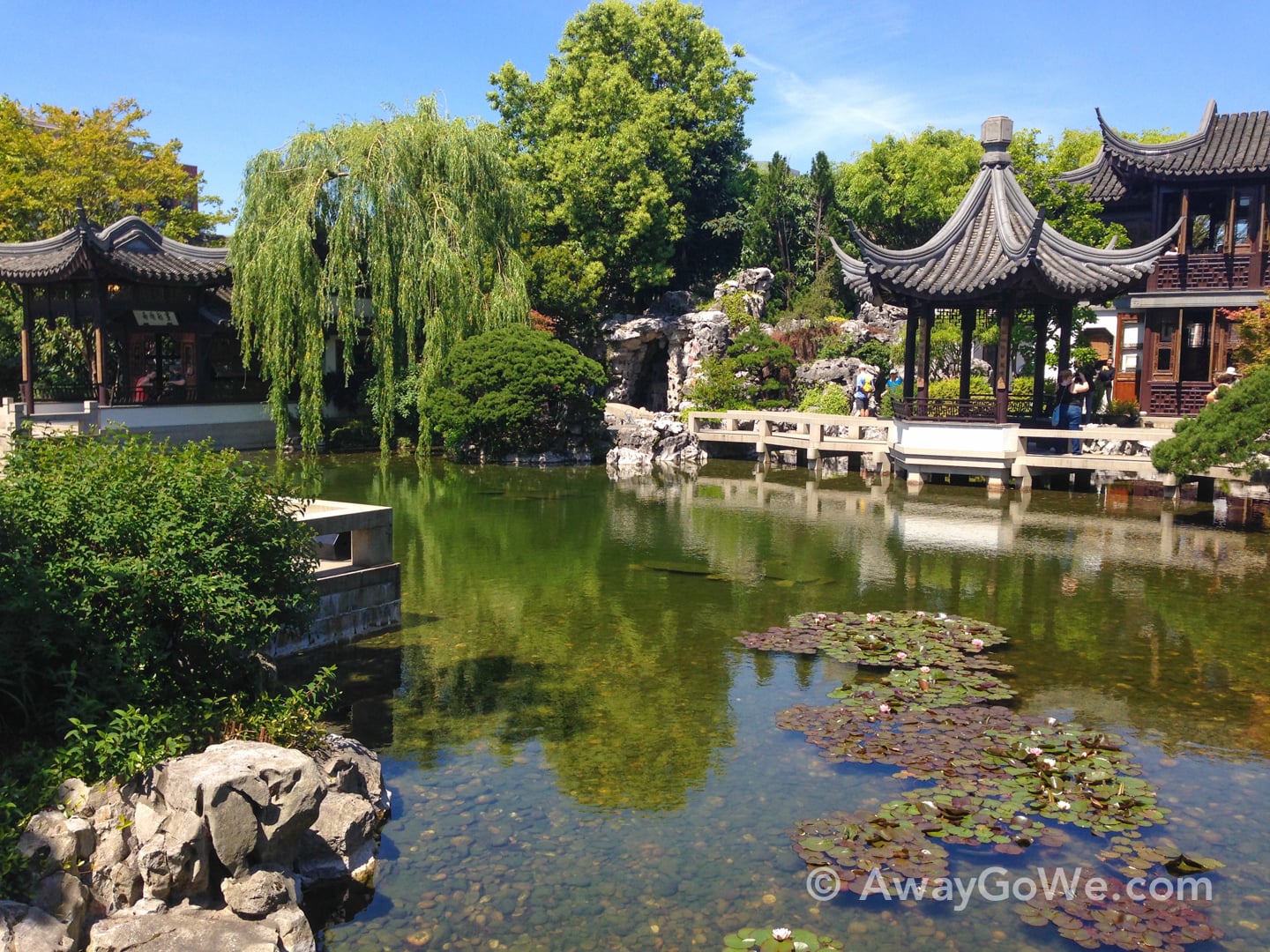
May
May is a particularly ideal time to visit the garden, as the weather tends to be less rainy and the flowers are in full bloom.
We took Lori’s brother, Dan, and his girlfriend, Lauren, for a visit to Lan Su on a particularly brilliant May day in Portland.

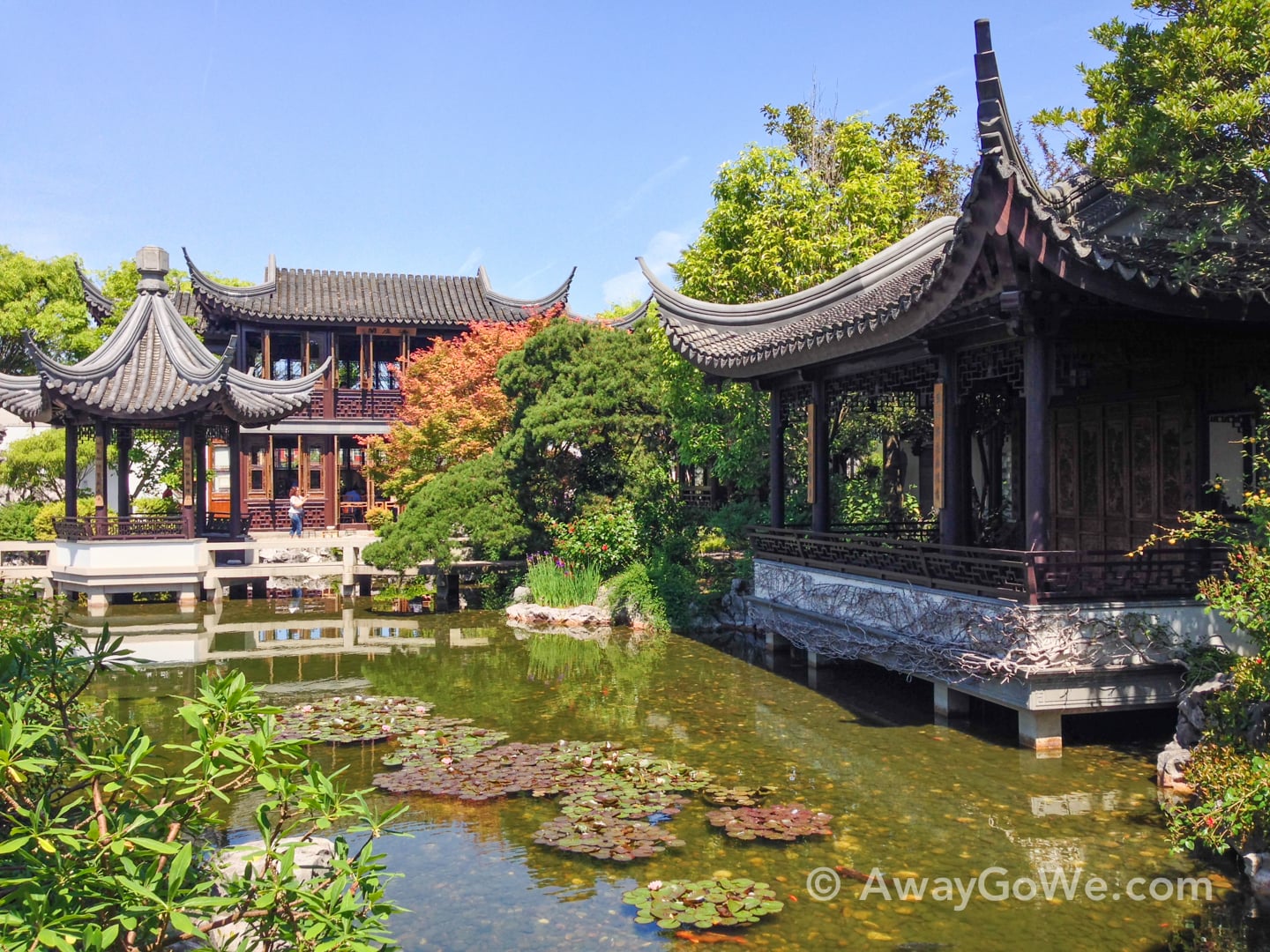
Above, on the right, the Hall of Brocade Clouds watches over Lake Zither. On the left, you’ve got the Moon Locking Pavilion connected to the “mainland” by a series of bridges/walkways, with the Tower of Cosmic Reflections (tea house) in the background.

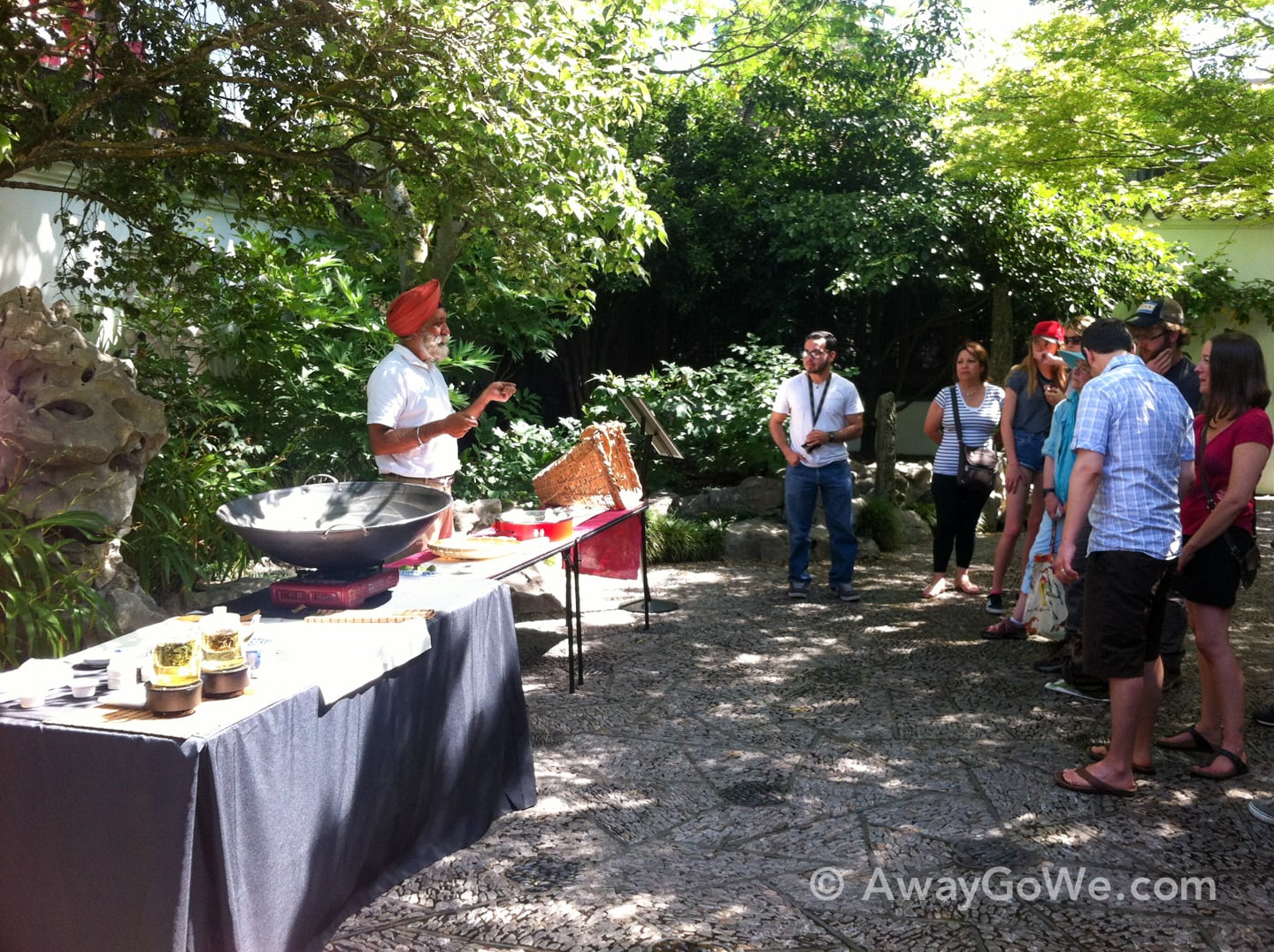
June
Summer time is the height of tourist season in Portland, and the number of visitors to Lan Su certainly reflects this.
On this unseasonably warm and sunny day, we were treated to a tea roasting demonstration in one of Lan Su’s exquisite courtyards (above).


September
I had the day off on my birthday this year and thought the Chinese Garden might be a nice place to spend a portion of the afternoon.
As luck would have it, another exceptionally gorgeous day.
Live traditional Chinese music, locally made cold tea, and a prime seat looking out through the open doors of the tea house to Lake Zither.
Mid-Autumn Festival
The crowds had mostly vanished by late September, but returned momentarily for the Mid-Autumn Festival, Lan Su’s second biggest annual event after Chinese New Years.
My parents were visiting and we thought the festival would be a fun opportunity to take them, along with my sister and our nephew, on a garden visit.
Our nephew, in particular, loved the dragon dancing and the exotic sights, sounds and smells.

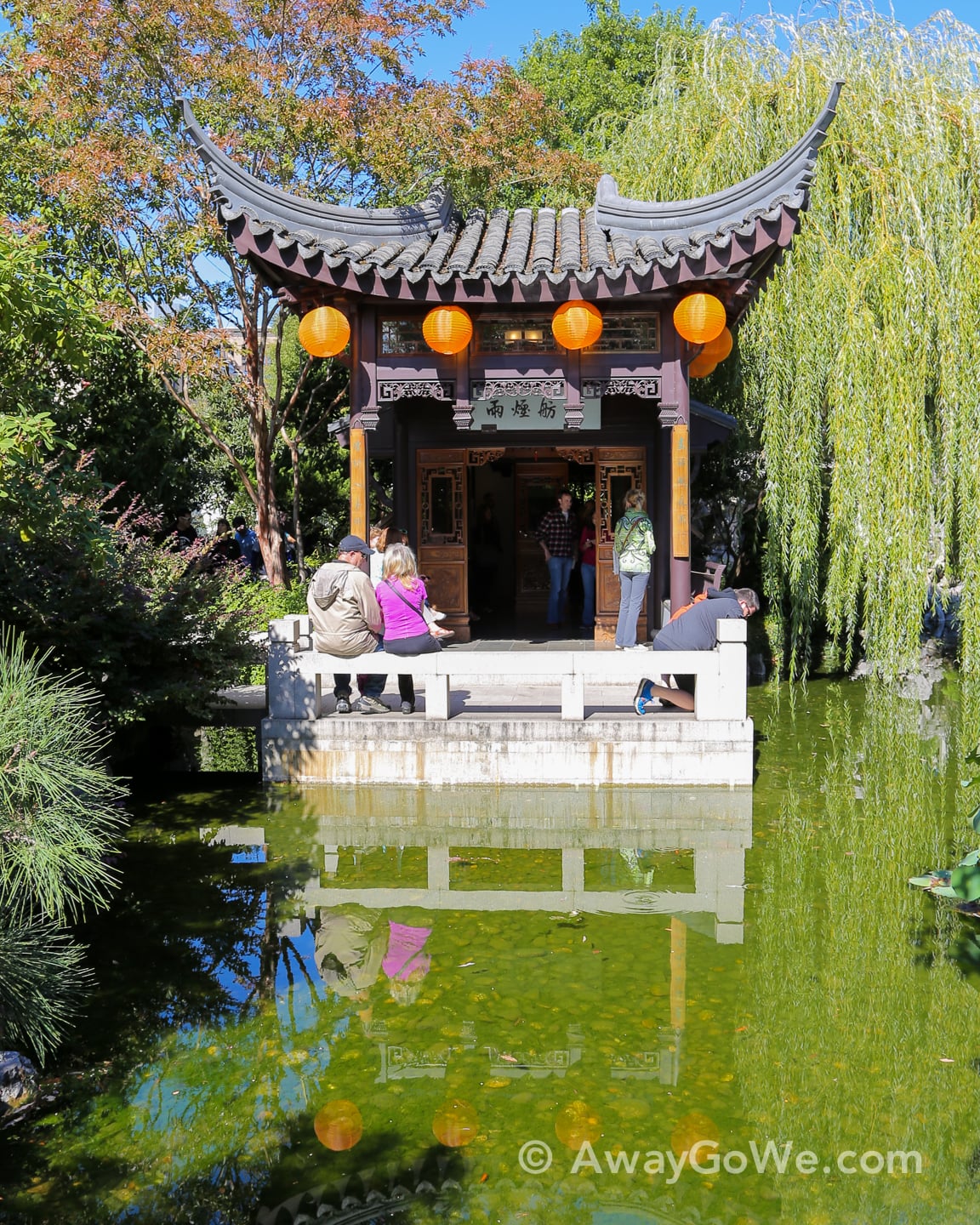

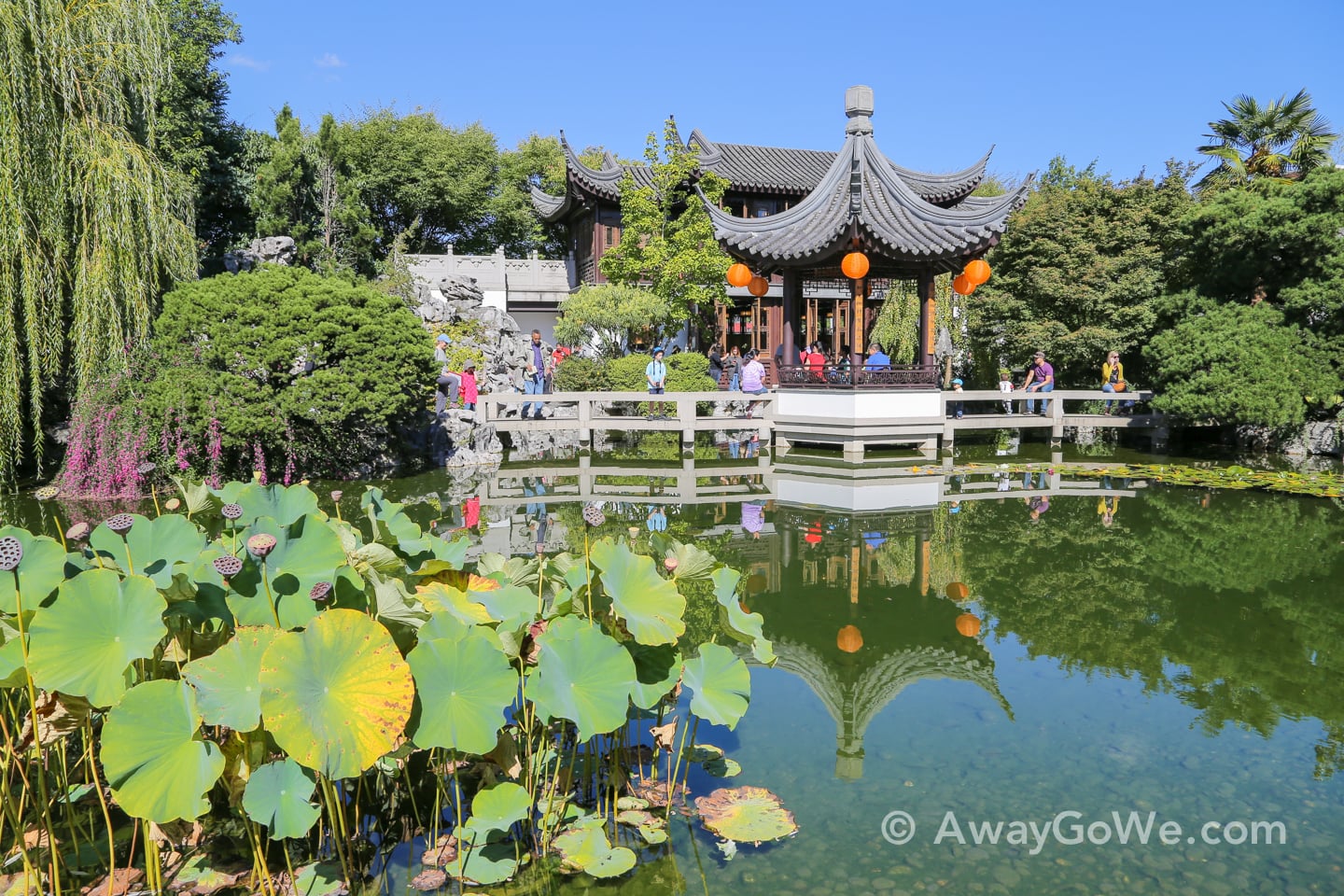



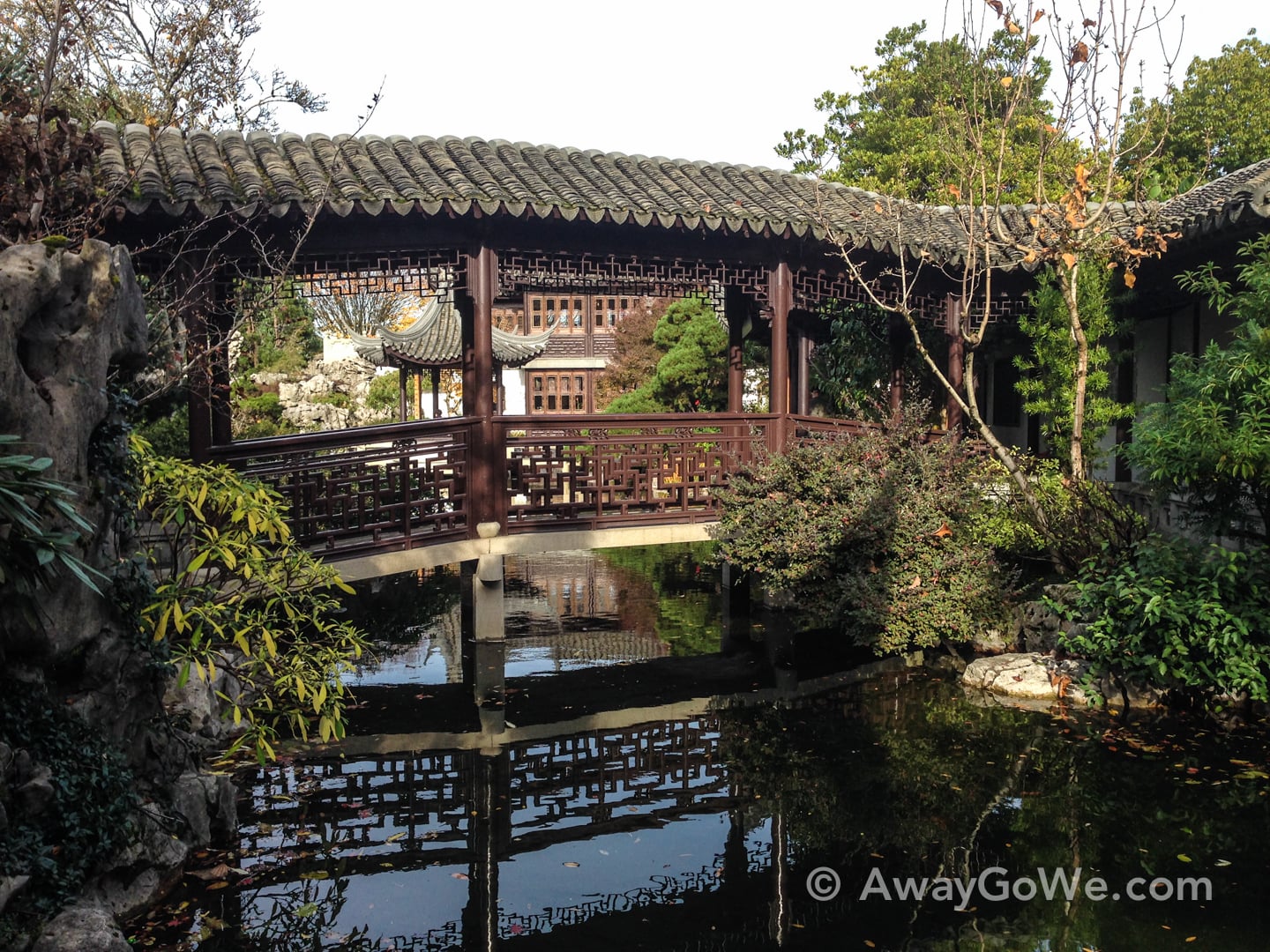
November
Leaving behind a gorgeous summer and pleasant fall, the arrival of November is a time of stillness and reflection at the garden, as the leaves continued to change color, crowds became sparse, and the chill of winter returned.
November was also significant for Lan Su, as the garden would soon be closed to the public for December and January for a major renovation of Lake Zither and the tea house doors.
We had known about the closure for some time but hadn’t given much thought to it, assuming we would not be around past October.
Once Baby B. came into the picture and we committed to staying in Portland through mid-2016, we knew there was one thing we had to do — we immediately renewed our annual membership to Lan Su for another year.
Baby B. might not have any clothes yet, but at least s/he will have live Chinese music, lake-weathered jade stone, and 10% off purchases at Tao of Tea to look forward to.




If you’d like to learn more about Lan Su, including visitor information and how you can support the garden, visit lansugarden.org.

